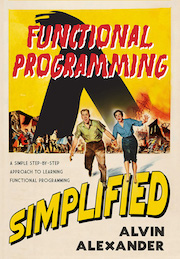The Attr.java Java example source code
/*
* DO NOT ALTER OR REMOVE COPYRIGHT NOTICES OR THIS FILE HEADER.
*
* This code is free software; you can redistribute it and/or modify it
* under the terms of the GNU General Public License version 2 only, as
* published by the Free Software Foundation. Oracle designates this
* particular file as subject to the "Classpath" exception as provided
* by Oracle in the LICENSE file that accompanied this code.
*
* This code is distributed in the hope that it will be useful, but WITHOUT
* ANY WARRANTY; without even the implied warranty of MERCHANTABILITY or
* FITNESS FOR A PARTICULAR PURPOSE. See the GNU General Public License
* version 2 for more details (a copy is included in the LICENSE file that
* accompanied this code).
*
* You should have received a copy of the GNU General Public License version
* 2 along with this work; if not, write to the Free Software Foundation,
* Inc., 51 Franklin St, Fifth Floor, Boston, MA 02110-1301 USA.
*
* Please contact Oracle, 500 Oracle Parkway, Redwood Shores, CA 94065 USA
* or visit www.oracle.com if you need additional information or have any
* questions.
*/
/*
* This file is available under and governed by the GNU General Public
* License version 2 only, as published by the Free Software Foundation.
* However, the following notice accompanied the original version of this
* file and, per its terms, should not be removed:
*
* Copyright (c) 2004 World Wide Web Consortium,
*
* (Massachusetts Institute of Technology, European Research Consortium for
* Informatics and Mathematics, Keio University). All Rights Reserved. This
* work is distributed under the W3C(r) Software License [1] in the hope that
* it will be useful, but WITHOUT ANY WARRANTY; without even the implied
* warranty of MERCHANTABILITY or FITNESS FOR A PARTICULAR PURPOSE.
*
* [1] http://www.w3.org/Consortium/Legal/2002/copyright-software-20021231
*/
package org.w3c.dom;
/**
* The <code>Attr interface represents an attribute in an
* <code>Element object. Typically the allowable values for the
* attribute are defined in a schema associated with the document.
* <p>Attr objects inherit the Node interface, but
* since they are not actually child nodes of the element they describe, the
* DOM does not consider them part of the document tree. Thus, the
* <code>Node attributes parentNode,
* <code>previousSibling, and nextSibling have a
* <code>null value for Attr objects. The DOM takes the
* view that attributes are properties of elements rather than having a
* separate identity from the elements they are associated with; this should
* make it more efficient to implement such features as default attributes
* associated with all elements of a given type. Furthermore,
* <code>Attr nodes may not be immediate children of a
* <code>DocumentFragment. However, they can be associated with
* <code>Element nodes contained within a
* <code>DocumentFragment. In short, users and implementors of the
* DOM need to be aware that <code>Attr nodes have some things in
* common with other objects inheriting the <code>Node interface, but
* they also are quite distinct.
* <p>The attribute's effective value is determined as follows: if this
* attribute has been explicitly assigned any value, that value is the
* attribute's effective value; otherwise, if there is a declaration for
* this attribute, and that declaration includes a default value, then that
* default value is the attribute's effective value; otherwise, the
* attribute does not exist on this element in the structure model until it
* has been explicitly added. Note that the <code>Node.nodeValue
* attribute on the <code>Attr instance can also be used to retrieve
* the string version of the attribute's value(s).
* <p> If the attribute was not explicitly given a value in the instance
* document but has a default value provided by the schema associated with
* the document, an attribute node will be created with
* <code>specified set to false. Removing attribute
* nodes for which a default value is defined in the schema generates a new
* attribute node with the default value and <code>specified set to
* <code>false. If validation occurred while invoking
* <code>Document.normalizeDocument(), attribute nodes with
* <code>specified equals to false are recomputed
* according to the default attribute values provided by the schema. If no
* default value is associate with this attribute in the schema, the
* attribute node is discarded.
* <p>In XML, where the value of an attribute can contain entity references,
* the child nodes of the <code>Attr node may be either
* <code>Text or EntityReference nodes (when these are
* in use; see the description of <code>EntityReference for
* discussion).
* <p>The DOM Core represents all attribute values as simple strings, even if
* the DTD or schema associated with the document declares them of some
* specific type such as tokenized.
* <p>The way attribute value normalization is performed by the DOM
* implementation depends on how much the implementation knows about the
* schema in use. Typically, the <code>value and
* <code>nodeValue attributes of an Attr node initially
* returns the normalized value given by the parser. It is also the case
* after <code>Document.normalizeDocument() is called (assuming the
* right options have been set). But this may not be the case after
* mutation, independently of whether the mutation is performed by setting
* the string value directly or by changing the <code>Attr child
* nodes. In particular, this is true when <a href='http://www.w3.org/TR/2004/REC-xml-20040204#dt-charref'>character
* references</a> are involved, given that they are not represented in the DOM and they
* impact attribute value normalization. On the other hand, if the
* implementation knows about the schema in use when the attribute value is
* changed, and it is of a different type than CDATA, it may normalize it
* again at that time. This is especially true of specialized DOM
* implementations, such as SVG DOM implementations, which store attribute
* values in an internal form different from a string.
* <p>The following table gives some examples of the relations between the
* attribute value in the original document (parsed attribute), the value as
* exposed in the DOM, and the serialization of the value:
* <table border='1' cellpadding='3'>
* <tr>
* <th>Examples
* <th>Parsed
* attribute value</th>
* <th>Initial Attr.value
* <th>Serialized attribute value
* </tr>
* <tr>
* <td valign='top' rowspan='1' colspan='1'>
* Character reference</td>
* <td valign='top' rowspan='1' colspan='1'>
* <pre>"x²=5"
* </td>
* <td valign='top' rowspan='1' colspan='1'>
* <pre>"x\u00b2=5"
* </td>
* <td valign='top' rowspan='1' colspan='1'>
* <pre>"x²=5"
* </td>
* </tr>
* <tr>
* <td valign='top' rowspan='1' colspan='1'>Built-in
* character entity</td>
* <td valign='top' rowspan='1' colspan='1'>
* <pre>"y<6"
* </td>
* <td valign='top' rowspan='1' colspan='1'>
* <pre>"y<6"
* </td>
* <td valign='top' rowspan='1' colspan='1'>
* <pre>"y<6"
* </td>
* </tr>
* <tr>
* <td valign='top' rowspan='1' colspan='1'>Literal newline between
 The search page
The search page Other Java source code examples at this package level
Other Java source code examples at this package level Click here to learn more about this project
Click here to learn more about this project
